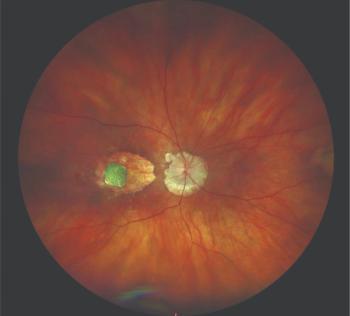
Human papillomavirus possibly linked to thyroid eye disease
Key Takeaways
- Researchers identified a potential link between HPV and thyroid eye disease (TED) through molecular mimicry, suggesting viral involvement in TED pathogenesis.
- Homology analysis revealed conserved motifs between HPV18 L1 capsid protein and TED-related proteins, indicating a possible immunologic link.
New research links HPV to thyroid eye disease, suggesting viral infection may trigger immune responses through molecular mimicry, impacting diagnosis and treatment.
Researchers from the University of Miami Miller School of Medicine, Miami, led by first author Ishita Garg, BS, reported that viral infection may be involved in the pathogenesis of thyroid eye disease (TED). They described the molecular evidence associating HPV with TED in a case-control study in JAMA Ophthalmology.1
They explained that while TED is “primarily linked to Graves disease through autoantibodies up-regulating insulin-like growth factor-1 receptor (IGF-1R) and thyroid-stimulating hormone receptor (TSHR), TED’s occurrence without thyroid dysfunction suggests other mechanisms, possibly involving molecular mimicry whereby pathogens mimic host antigens, triggering immune responses.2,3 This is supported by instances of TED following COVID-19.4,5 It was hypothesized that an infectious agent leveraging molecular mimicry might be involved in TED pathogenesis.”
The investigators recounted that they used the National Center for Biotechnology Information Basic Local Alignment Search Tool to search for amino acid sequence homologies between TSHR and IGF-1R proteins to various viral proteomes that included Papillomaviridae, Paramyxoviridae, Herpesviridae, Enterovirus, Polyomaviridae, and Rhabdoviridae. They performed enzyme-linked immunoassays (ELISAs) on orbital adipose tissue samples from 11 participants with TED undergoing orbital decompression surgery and on 11 control participants undergoing blepharoplasty to quantify antiviral antibody titers.
The main study outcomes were the homology analysis between TSHR and IGF-1R with several viral proteins, human papillomavirus 18 (HPV18) L1 immunoglobulin G (IgG) titers in TED orbital fat samples, and clinical characteristics associated with HPV18 L1 IgG titers.
Results of homology analysis
A total of 22 patients (19 women; mean age, 58.6 years; range, 37.4 to 74.4 years) were included in the study.
“Homology analysis revealed conserved motifs shared by TSHR and IGF-1R, notably with the HPV18 L1 capsid protein. Homologous regions of FGXV and IXEXT+NP were identified across all HPV serotypes and both IGF-1R and TSHR. ELISAs showed differences in the mean HPV18 L1 IgG normalized optical density levels among tissues from controls vs participants with chronic TED (mean, 0.94; mean differential, −1.37; 95% confidence interval [CI], −2.64 to −0.09; P = 0.03), controls vs participants with acute active TED (mean, 0.94; mean differential, −3.15; 95% CI, −4.69 to −1.61; P < 0.001), and participants with chronic TED vs acute active TED (mean, 2.31; mean differential, −1.78; 95% CI, −3.44 to −0.13; P = 0.03),” the authors reported.
The researchers concluded, “This case-control study presents potential molecular evidence linking HPV and TED, highlighting molecular mimicry between HPV capsid protein and key autoimmunity targets in TED. This suggests an immunologic link contributing to TED’s pathogenesis, opening new potential avenues for understanding and management of the disease. Confirming this connection could influence the diagnosis, treatment, and potentially the prevention of TED.”
References
Garg I, Meyer BI, Gallo RA, Wester ST, Pelaez D. Human papillomavirus and thyroid eye disease. JAMA Ophthalmol. 2025;Published online April 24. doi:10.1001/jamaophthalmol.2025.0847
Hoang TD, Stocker DJ, Chou EL, Burch HB. Update on clinical management of Graves disease and thyroid eye disease. Endocrinol Metab Clin North Am. 2022;51:287-304. doi:
10.1016/j.ecl.2021.12.004 Hodgson NM, Rajaii F. Current understanding of the progression and management of thyroid associated orbitopathy: a systematic review. Ophthalmol Ther. 2020;9:21-33. doi:
10.1007/s40123-019-00226-9 Martins YC, Jurberg AD, Daniel-Ribeiro CT. Visiting molecular mimicry once more: pathogenicity, virulence, and autoimmunity. Microorganisms. 2023;11:1472. doi:
10.3390/microorganisms11061472 Allam MM, El-Zawawy HT, Ahmed SM, Aly Abdelhamid M. Thyroid disease and covid-19 infection: case series. Clin Case Rep. 2021;9:e04225. doi:
10.1002/ccr3.4225
Newsletter
Don’t miss out—get Ophthalmology Times updates on the latest clinical advancements and expert interviews, straight to your inbox.





